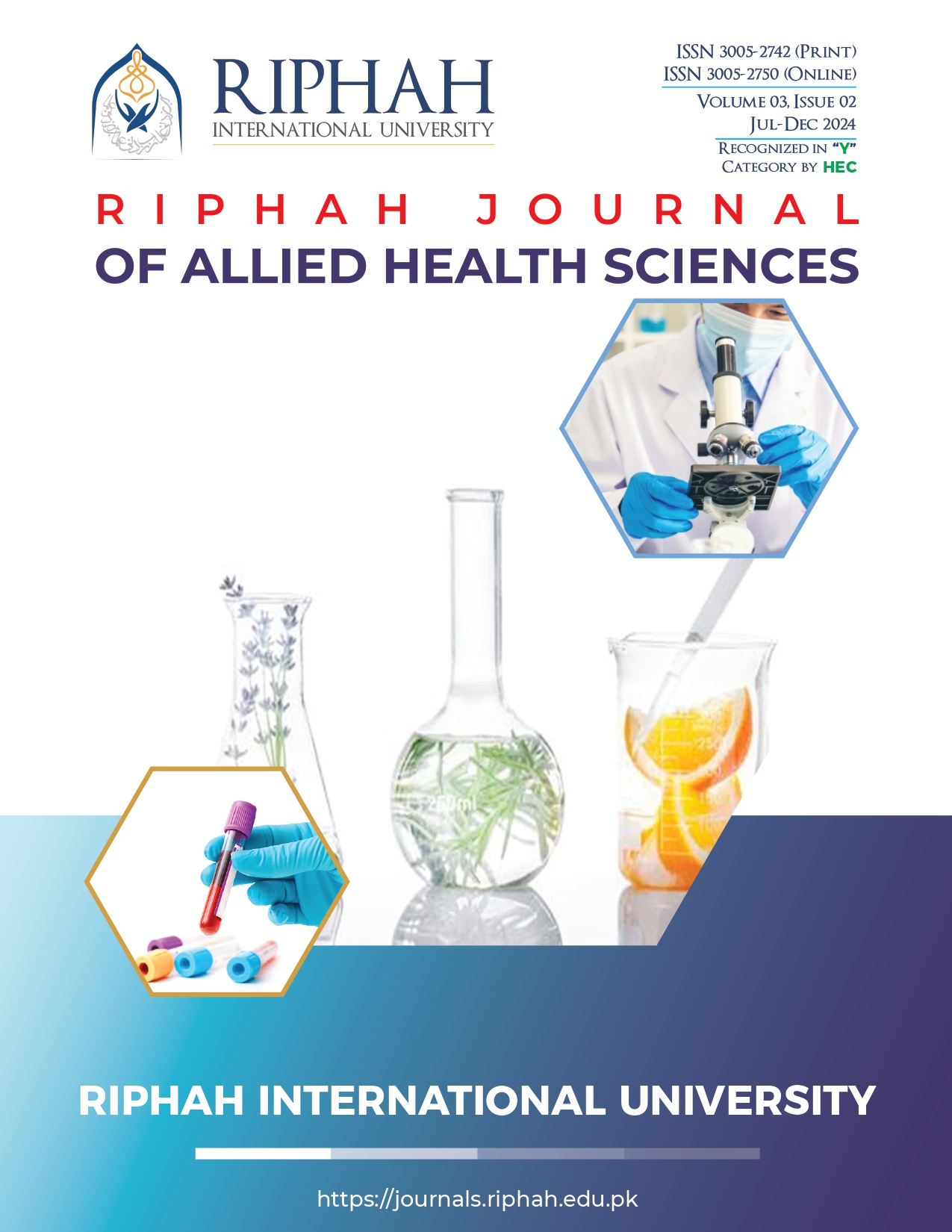Interplay between physical activity, dietary patterns, and lipid profiles in prehypertensive young adults
Keywords:
Prehypertension, Body Mass Index, Blood Pressure, Cholesterol, Triglycerides, Cardiovascular diseases, lifestyle interventions, Dietary HabitsAbstract
Background: Non-communicable diseases (NCDs) now account for the majority of global deaths, with cardiovascular diseases such as heart attacks and strokes being the most prevalent. These conditions are driven by modifiable metabolic risk factors, including prehypertension, dyslipidemia, obesity, and elevated triglycerides, which often develop silently in young adults. Fortunately, lifestyle changes, particularly adopting healthier dietary patterns and engaging in regular physical activit,y can effectively lower blood pressure and improve lipid profiles, thereby reducing cardiovascular risk.
Objective: This study therefore investigates how diet quality and exercise levels relate to cholesterol and triglyceride profiles in 20–25-year-old university students with prehypertension or hypertension, aiming to identify key behaviors for early prevention.
Results: In a cohort of 100 university students (55% female, 45% male, aged 20–25), 49% were normotensive, 39% prehypertensive, and 12% hypertensive. Mean BMI was 22.02 ± 3.68 kg/m²; 64% had normal BMI, 17% were overweight, 3% obese, and 16% underweight. Cholesterol levels were desirable in 55%, borderline in 24%, and high in 21%, while 78% had normal triglycerides. Physical activity levels were low, with 58% minimally active, 13% highly active, and 29% inactive. BMI positively correlated with blood pressure (r = 0.492, p < 0.001) and inversely with physical activity (r = –0.220, p = 0.028). Physical activity also were negatively correlated with blood pressure (r = –0.247, p = 0.013). No significant correlations were found between BMI or physical activity and lipid levels. Blood pressure correlated modestly with cholesterol (r = 0.277, p = 0.005), while cholesterol and triglycerides showed a moderate inverse correlation (r = –0.322, p = 0.001). Healthier diets were associated with improved blood pressure and lipid profiles, though BMI links were less clear. These findings underscore the importance of integrated lifestyle approaches in managing cardiometabolic risk among young adults.
Conclusion: This study underscores the critical role of lifestyle modification—specifically healthier diets and increased physical activity—in curbing early cardiometabolic risk among young adults. By highlighting modifiable behaviors linked to blood pressure and lipid regulation, it provides actionable targets for university health programs. Ultimately, these findings support the implementation of campus‐based wellness initiatives to prevent progression to overt cardiovascular disease.


